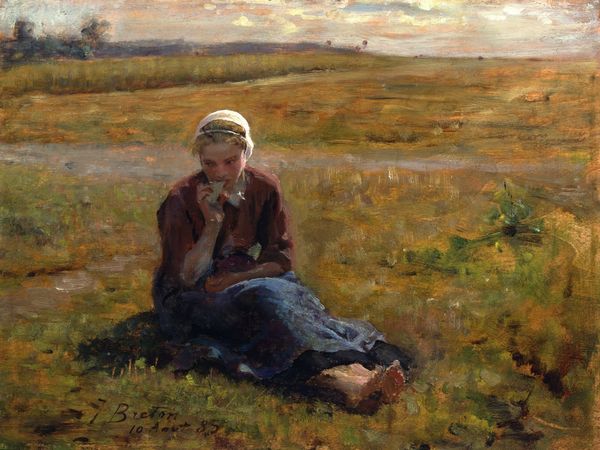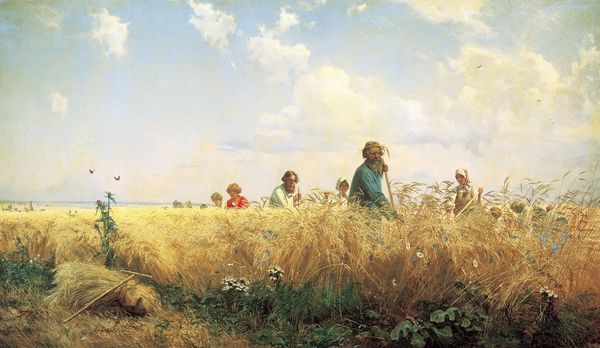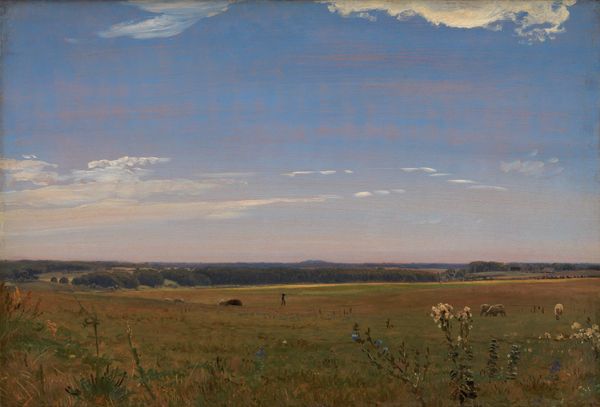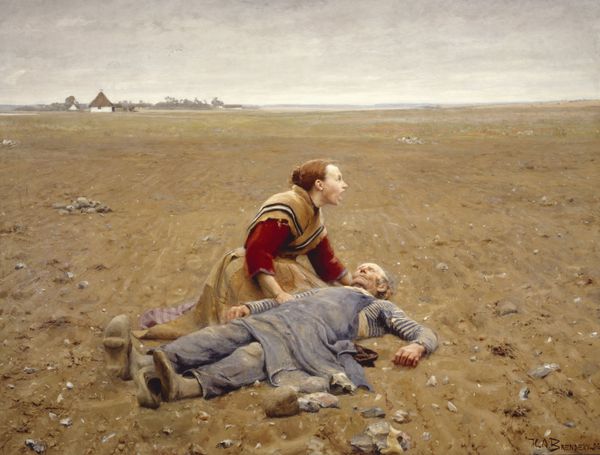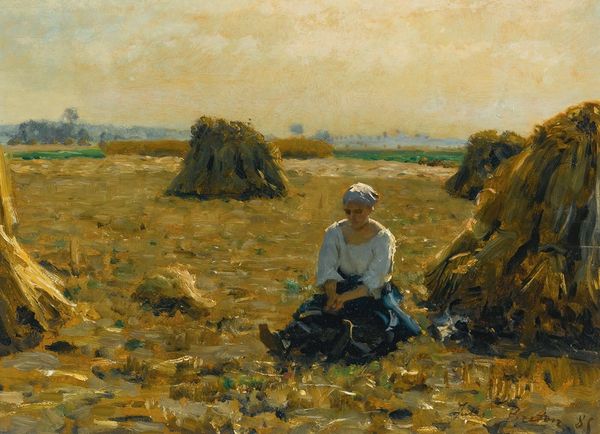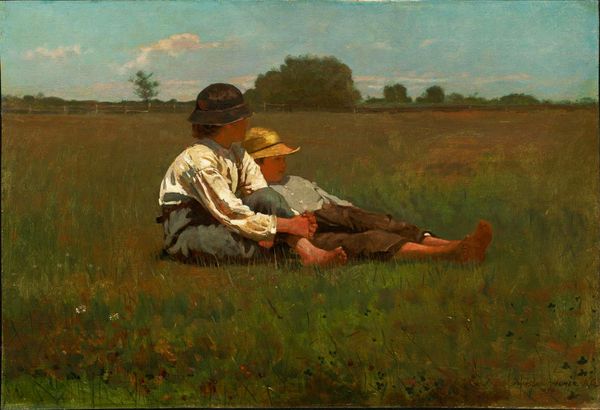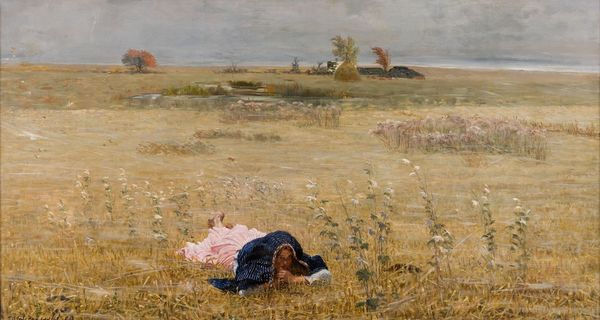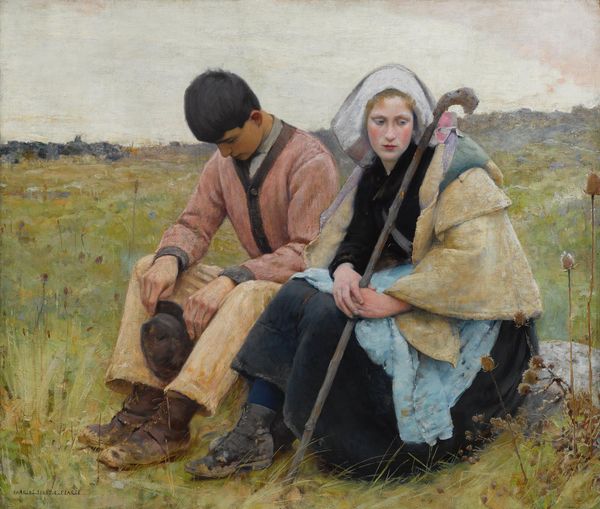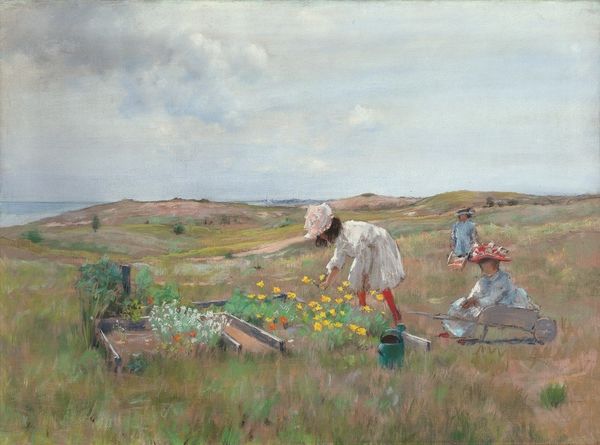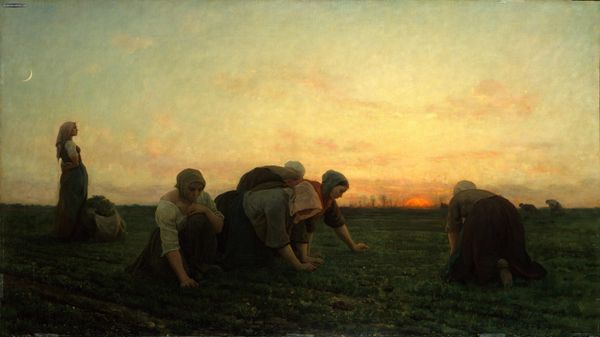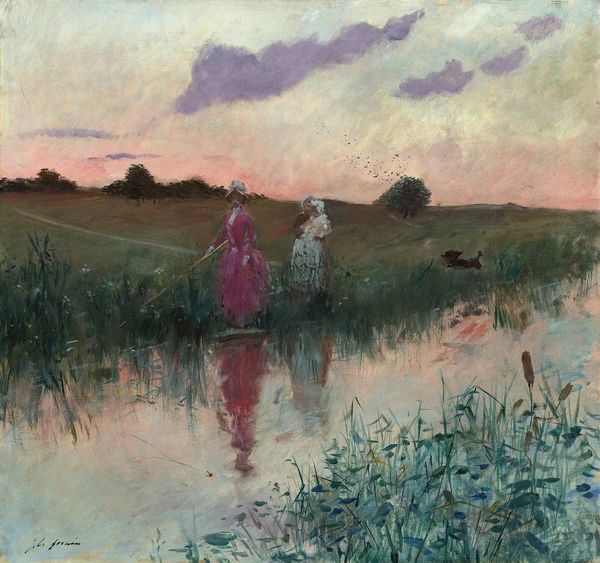
painting, plein-air, oil-paint
#
portrait
#
painting
#
impressionism
#
plein-air
#
oil-paint
#
landscape
#
figuration
#
oil painting
#
genre-painting
Dimensions: 43 cm (height) x 62.5 cm (width) (Netto), 53.4 cm (height) x 72.8 cm (width) x 5.8 cm (depth) (Brutto)
Editor: Michael Ancher's "Two Girls in a Field. A Summer’s Day," painted between 1885 and 1889 with oil paints, has a serene, almost wistful quality to it. The girls seem lost in their own world. How do you interpret this work in terms of its social context? Curator: It's tempting to see this as a simple, idyllic scene, but let's consider the period. Ancher painted this at a time of significant social change, particularly regarding the role of women. How might these figures in the field represent the constraints and possibilities of women's lives in rural Denmark during this period? Are they figures of innocence, or symbols of something more complex? Editor: That's an interesting way to look at it. I was just thinking about the Impressionistic style and the colours! Curator: The Impressionistic brushstrokes and the focus on light, definitely, but don’t let the pretty colours distract from the potential narratives embedded in the image. What does it mean to portray these young girls within the context of a larger, open landscape? Is the landscape liberating or isolating? Consider, too, how Ancher, as a male artist, might be projecting his own views of femininity and rural life. Editor: So, beyond just appreciating the art, we need to consider the societal lens. Is Ancher maybe commenting on the limited roles available to women, even while seemingly celebrating rural life? Curator: Precisely! Think about how gender, class, and the changing rural landscape all intersect. Ancher's work can then be viewed not just as an artistic endeavor, but as a document that raises important questions about the society in which it was created. Editor: That’s a really powerful reinterpretation. I will think about how artistic expression often carries the weight of its social environment. Thank you! Curator: Indeed, by exploring the complex interplays of representation and historical realities, we get a more nuanced understanding. It encourages dialogue with both art history and contemporary issues.
Comments
No comments
Be the first to comment and join the conversation on the ultimate creative platform.
